Being aware that Alex Forbes released fake, dyed Class A figures into the community is the first step in protecting collectors.
Providing a way to identify these figures is the second step in protecting collectors. Providing a viable solution isn’t easy, because dyed figures have never previously been a problem. Where do we start?
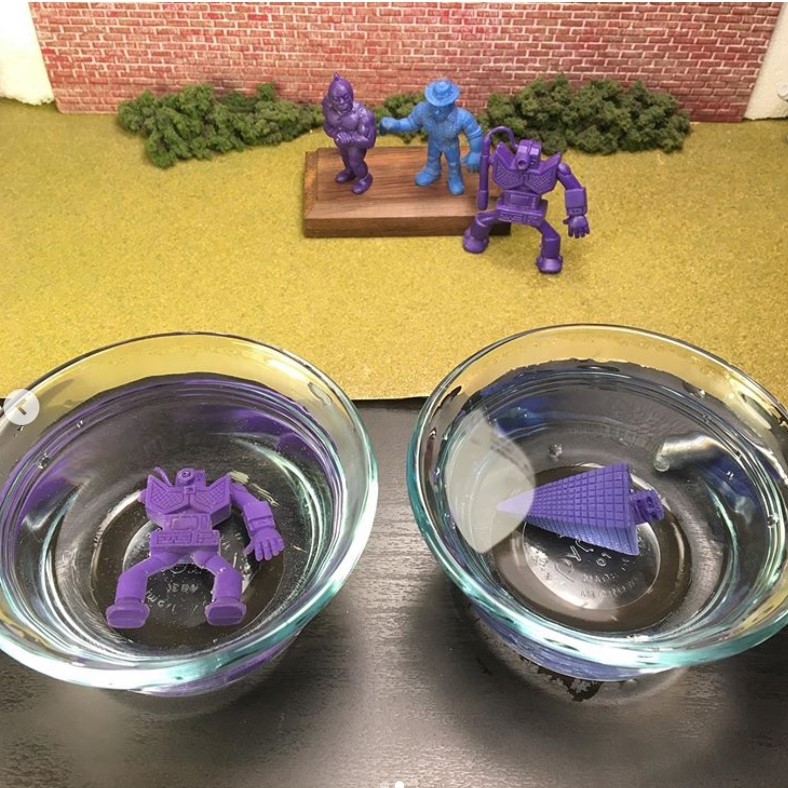 My Purple #107 was quickly called into question. I certainly had my own fears too. But I didn’t want to just assume. I wanted a solution that would satiate my curiosity and help others too.
My Purple #107 was quickly called into question. I certainly had my own fears too. But I didn’t want to just assume. I wanted a solution that would satiate my curiosity and help others too.
I started with what seemed like the easiest option: soaking the figure in water. Maybe the figure would bleed color into the water? Maybe the figure itself would change?
I took a regular Purple figure and my “Purple #107.” The two figures soaked for at least two weeks. I have to admit, I lost count exactly. The start of Coronavirus quarantine was certainly a distraction.
The exact day count doesn’t matter because there were no observable differences with the two figures.
I saw the second possible identification solution proposed by Jphat on LittleRubberGuys.com. He suggested the use of UV light.
At first I thought his suggestion was the perfect answer.
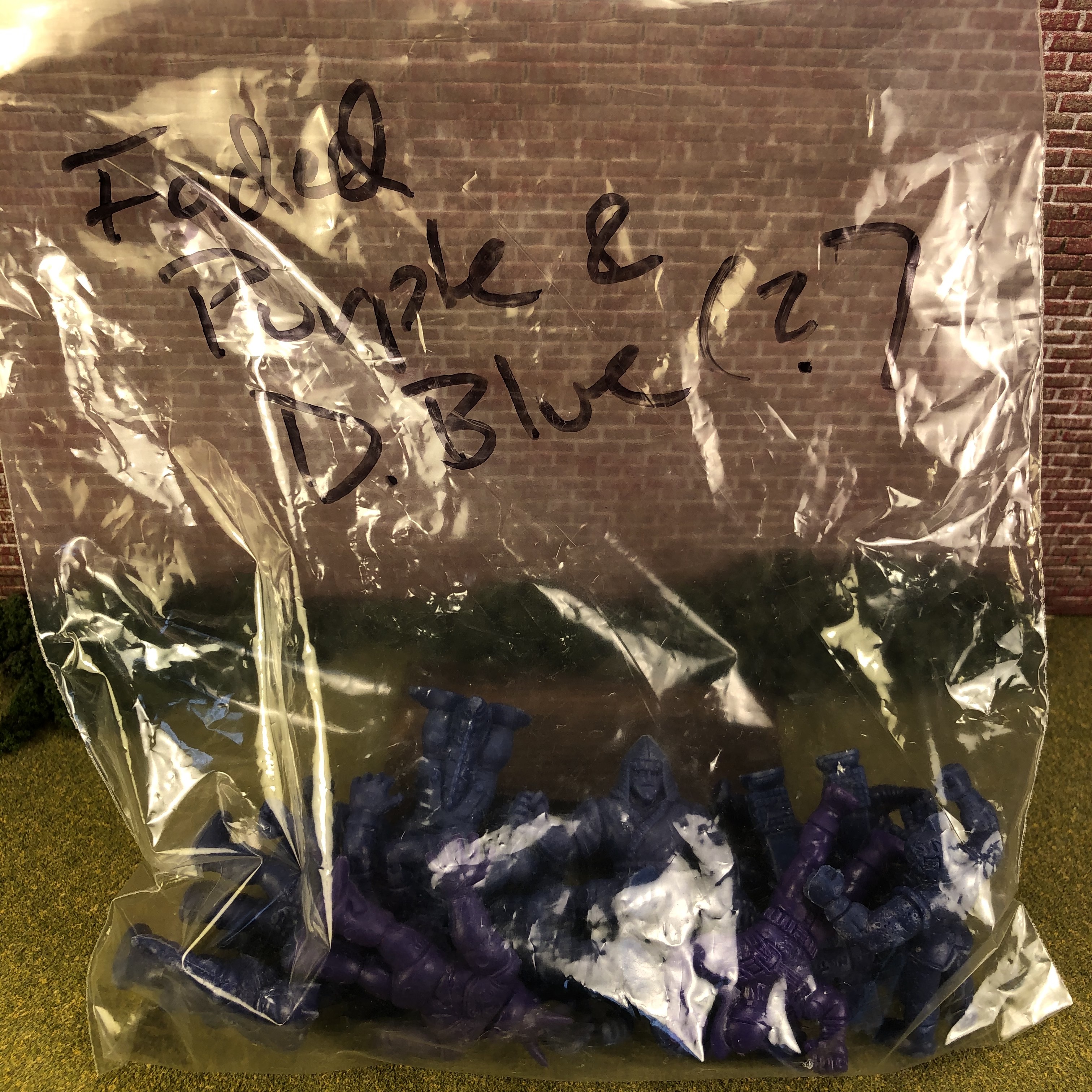 There seemed to be a significant difference between the two obviously Purple figures, the Dark Blue figure, and the #107 figure being investigated. The Purple figures gave off a pinkish color and the other two figures did not react the same way.
There seemed to be a significant difference between the two obviously Purple figures, the Dark Blue figure, and the #107 figure being investigated. The Purple figures gave off a pinkish color and the other two figures did not react the same way.
However, the #107 didn’t look exactly the same as the Dark Blue figure under the light. Because I didn’t know if the #107 was authentic I couldn’t 100% conclude the difference was because of being dyed or something else.
I decide to pull out a baggie of faded Purple/Dark Blue figures I had collected over the years. You can actually see the aforementioned bag in the Instagram post from April of 2016.
The results were shocking to me.
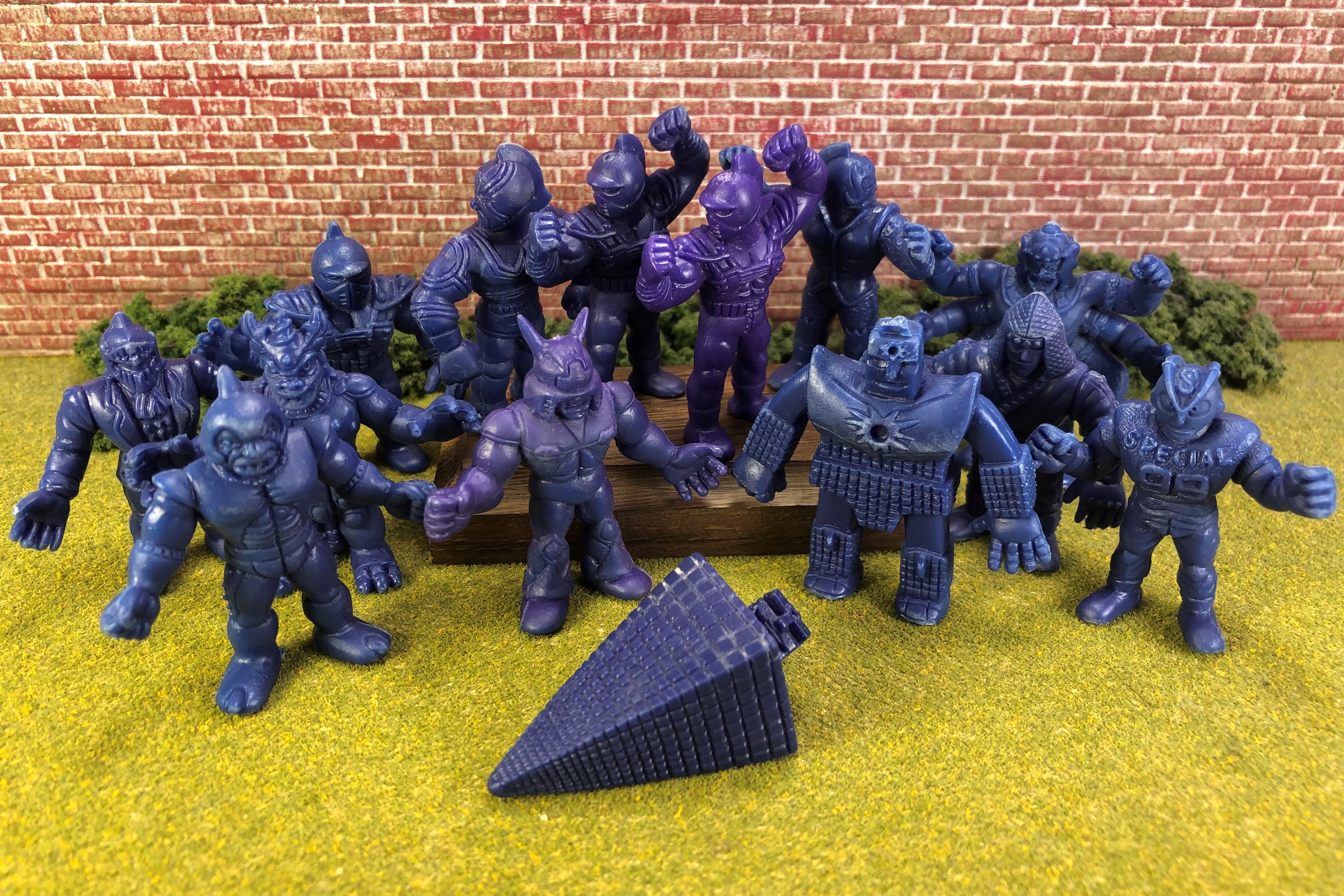 The reactions to the UV light varied greatly. There were Purple figures that didn’t have that pink-hue. And I knew these were all 100% authentic M.U.S.C.L.E. figures.
The reactions to the UV light varied greatly. There were Purple figures that didn’t have that pink-hue. And I knew these were all 100% authentic M.U.S.C.L.E. figures.
I was left with two reasonable conclusions:
- Different degrees of faded Purple figures will react differently to UV light.
- UV light is ineffective at identifying dyed figures.
What else was could be reasonable solution to discovering if a figure is dyed?
Nick’s nuclear option was 100% effective, but too large of a risk. I wasn’t 100% sure the #107 was dyed. Other collectors would face the same challenge.
I decided that drilling into the figure, with the smallest bit I had available (1/16th), would be a sound option. Thanks to Nick, we know the dye doesn’t permeate the entire figure. The middle is still the original color.
The first drilling needed to be a control Purple figure.
The core of the figure was obviously Purple.
Now that we know what the inside of a Purple figure looks like, it seemed appropriate to test the Purple #107 that could be dyed.
I won’t lie. I was so excited when that string came out Purple. I was so excited I was trying to pull out the drill before it actually released.
Of course, I had to temper my excitement. I hadn’t tested the Dark Blue figure. While I didn’t expect the Dark Blue innards to look similar, I had to be 100% confident.
My Purple #107 is an authentic M.U.S.C.L.E. figure – even if he isn’t the most vibrant example ever documented. I still love him. I am still forever indebted to Chuck.
And verifying the unknown is critical to gaining knowledge. Just making assumptions based on your gut, isn’t sound science.
I think it is a dark blue one 😫
Yeah. The lighter fading in the front looks like a definitely die job.
How many of these did you find in YOUR collection, Chad?
I don’t know for sure but, having multiple forbes originals, this purple 107 sure looks fake to me
I know opinions are necessary and crucial to good discussions (and I share them all the time), but they are always just opinions. We need valid evidence to change our best M.U.S.C.L.E. theories. For example, I wouldn’t say Red #131 doesn’t exist because I haven’t seen it. Our best theory says it exists. My opinion is it doesn’t exist, but I need evidence if I’m going to go against our best theory. I need to make sure I don’t get too far offtrack.
We know some dyed figures made it into the M.U.S.C.L.E. world. Boring a small hole into a questionable figure seems to be, currently, the most effective method to verify a figure. And the good news is that you can practice on worthless figures.
I have never been overly concerned with the condition of my M.U.S.C.L.E. figures. A tiny hole doesn’t detract from display if done properly.
I’ve never worried about ink on a foot, and I don’t see this being much different.
I believe 99.9% of M.U.S.C.L.E. collectors will never need to drill into their figures. But if you ever think, “How can I identify a dyed figure?”
I hope this post helps.
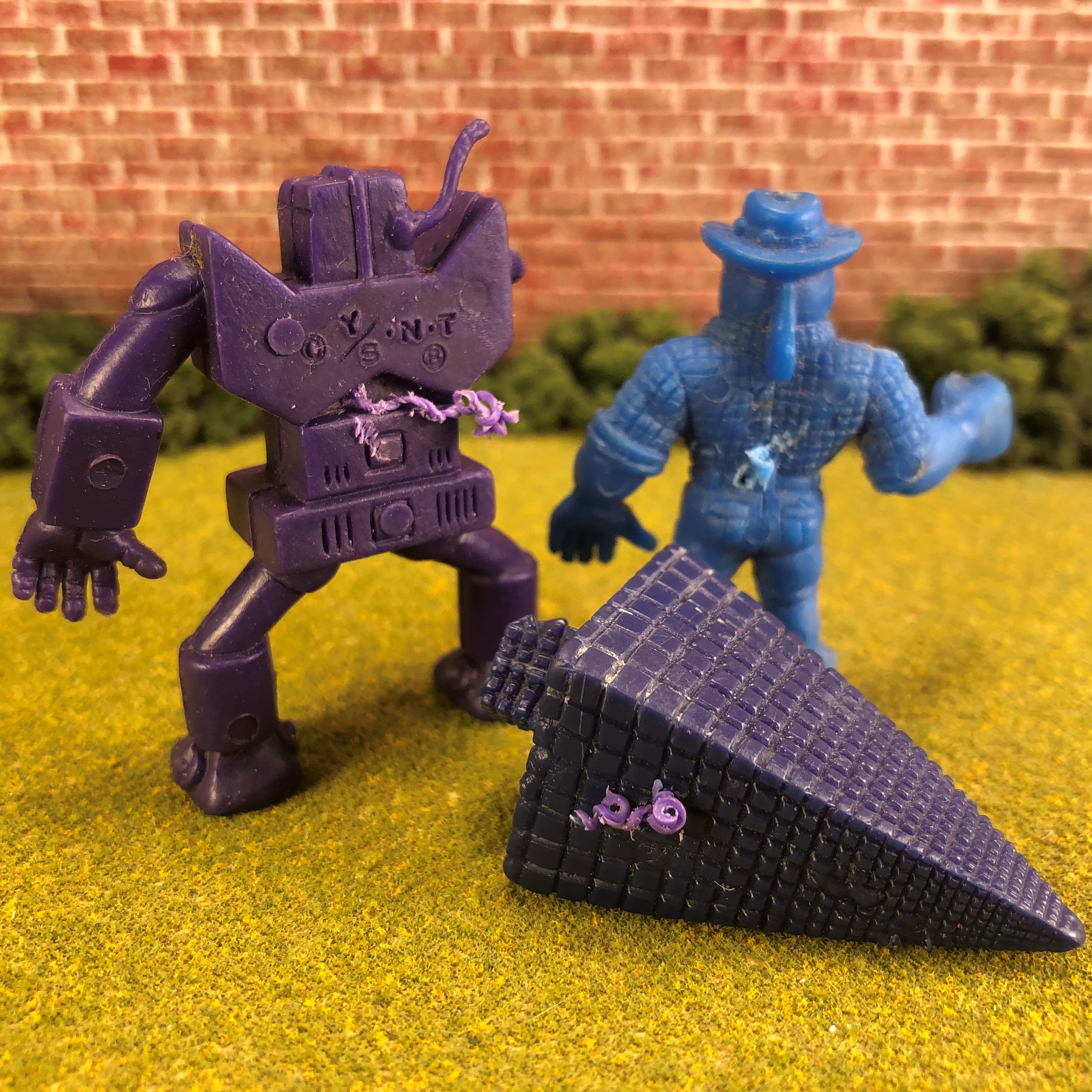
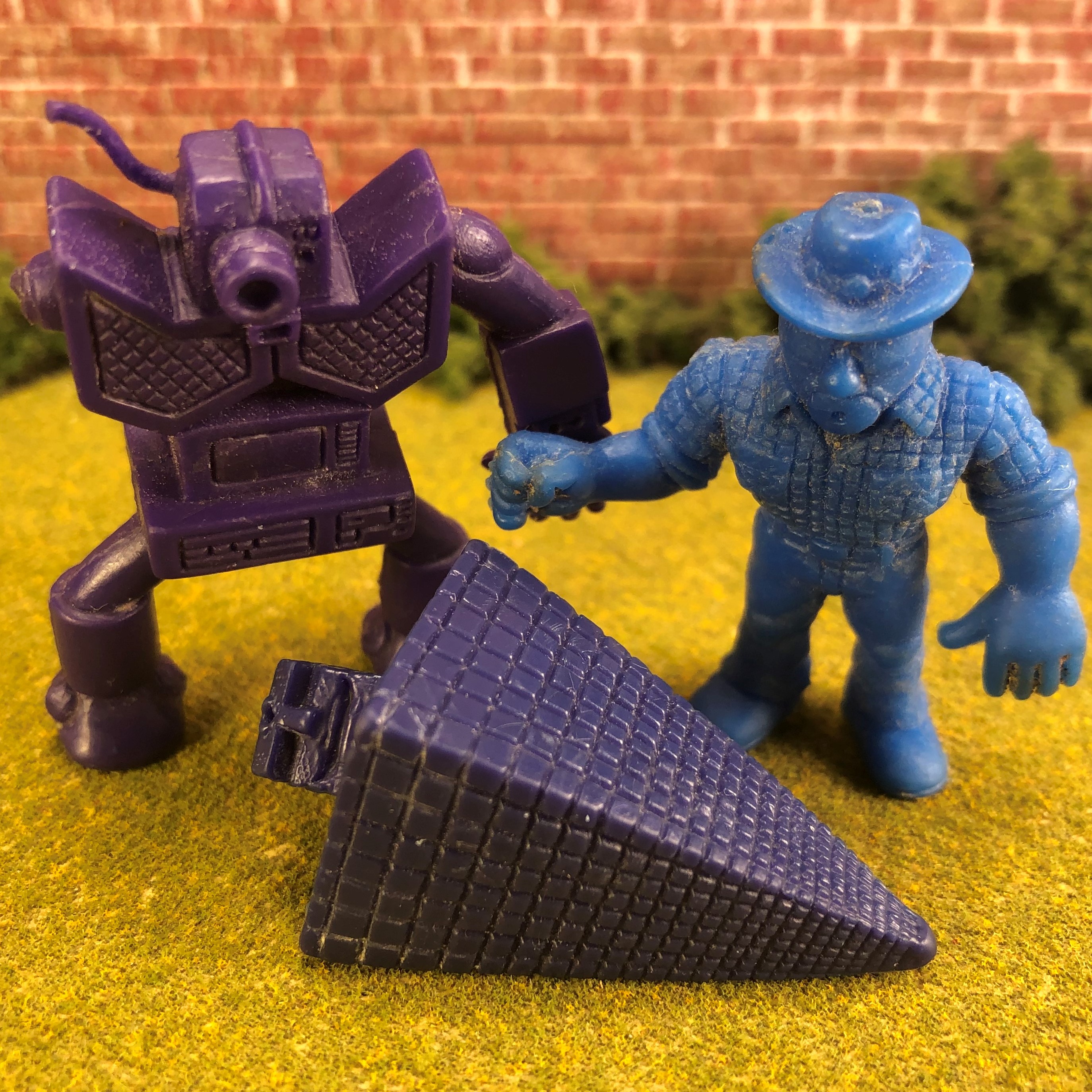
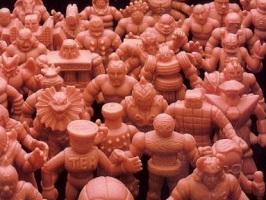
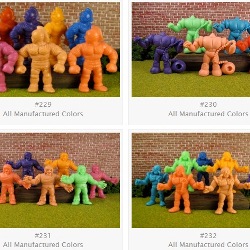
#1 by TheOrgg on June 22, 2020 - 2:05 pm
Why not put them in a clamp upside down and drill into the foot?
#2 by Chad Perry on June 22, 2020 - 2:28 pm
The #107 was in the clamp. But no matter how hard I looked, I couldn’t find his foot.
And I didn’t care about the other two.
#3 by scott on June 25, 2020 - 5:01 pm
Once a figure is dyed, is there no way to remove a dye job and leave the under lying color of the figure intact?
#4 by Scott on June 29, 2020 - 6:56 pm
Chad, do you think the purple claw in shopper_in_pdx eBay listing is authentic or would you need your drill to make the call? Thanks, Scott
#5 by Scott on July 14, 2020 - 9:40 pm
Hot damn!! Don’t waste the battery on that cordless drill. I am sure a core sample is not required. 36 bids…$810. WTF is going on with the price of little Mattel plastic guys? “It’s the end of the world as we know it…and I feel fine”. I’ve had my eye on a set of poodle salt and pepper shakers and I’m pretty sure that I can afford them given the amount of money I have saved by not bidding on figures.